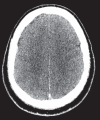Antibiotic-resistant hypervirulent Klebsiella pneumoniae causing community- acquired liver abscess: an emerging disease
- PMID: 31198568
- PMCID: PMC6544431
- DOI: 10.1093/omcr/omz032
Antibiotic-resistant hypervirulent Klebsiella pneumoniae causing community- acquired liver abscess: an emerging disease
Abstract
We report a case of a patient with fatal community-acquired pyogenic liver abscess (CA-PLA) caused by multi drug-resistant, hypervirulent, Klebsiella pneumoniae (mdrhvKP). HvKP causing PLA has been described in East and South East Asia and it is recognized as an emerging infection worldwide. The syndrome is characterized by cryptogenic liver abscess formation without a previous history of hepatobiliary or colonic disease and metastatic spread of infection via the bloodstream to distant sites, including lungs, central nervous system and other organ systems. Diabetes mellitus is a recognized risk factor. Most previously reported cases have involved antibiotic susceptible strains of hvKP although reports of bloodstream infections caused by resistant strains, including carbapenemase producers, are increasing. Our report highlights the need for awareness of this devastating infection in patients presenting with sepsis and liver abscess without underlying hepatobiliary or colonic disease.
Figures









Similar articles
-
[Clinical characteristics in patients with hypervirulent Klebsiella pneumoniae infection and its capsular serotypes and multilocus sequence typing].Zhonghua Nei Ke Za Zhi. 2019 May 1;58(5):361-365. doi: 10.3760/cma.j.issn.0578-1426.2019.05.006. Zhonghua Nei Ke Za Zhi. 2019. PMID: 31060144 Chinese.
-
Cryptogenic Liver Abscess Caused by a K1 Serotype Klebsiella pneumoniae Isolate.J Glob Infect Dis. 2022 Aug 26;14(3):117-119. doi: 10.4103/jgid.jgid_188_21. eCollection 2022 Jul-Sep. J Glob Infect Dis. 2022. PMID: 36237561 Free PMC article.
-
Mapping the Evolution of Hypervirulent Klebsiella pneumoniae.mBio. 2015 Jul 21;6(4):e00630. doi: 10.1128/mBio.00630-15. mBio. 2015. PMID: 26199326 Free PMC article.
-
Antimicrobial Resistance of Hypervirulent Klebsiella pneumoniae: Epidemiology, Hypervirulence-Associated Determinants, and Resistance Mechanisms.Front Cell Infect Microbiol. 2017 Nov 21;7:483. doi: 10.3389/fcimb.2017.00483. eCollection 2017. Front Cell Infect Microbiol. 2017. PMID: 29209595 Free PMC article. Review.
-
Hypervirulent Klebsiella pneumoniae Endogenous Endophthalmitis-A Global Emerging Disease.Life (Basel). 2021 Jul 10;11(7):676. doi: 10.3390/life11070676. Life (Basel). 2021. PMID: 34357049 Free PMC article. Review.
Cited by
-
Passive epidemiological surveillance in wildlife in Costa Rica identifies pathogens of zoonotic and conservation importance.PLoS One. 2022 Sep 26;17(9):e0262063. doi: 10.1371/journal.pone.0262063. eCollection 2022. PLoS One. 2022. PMID: 36155648 Free PMC article.
-
Pyogenic liver abscess caused by extended-spectrum β-lactamase-producing hypervirulent Klebsiella pneumoniae diagnosed by third-generation sequencing: a case report and literature review.J Int Med Res. 2023 Oct;51(10):3000605231206296. doi: 10.1177/03000605231206296. J Int Med Res. 2023. PMID: 37903314 Free PMC article. Review.
-
Molecular Epidemiology of Hypervirulent K. pneumoniae and Problems of Health-Care Associated Infections.Bull Exp Biol Med. 2022 Mar;172(5):507-522. doi: 10.1007/s10517-022-05424-3. Epub 2022 Mar 30. Bull Exp Biol Med. 2022. PMID: 35352244 Free PMC article.
-
The transcriptional regulator Fur modulates the expression of uge, a gene essential for the core lipopolysaccharide biosynthesis in Klebsiella pneumoniae.BMC Microbiol. 2024 Jul 27;24(1):279. doi: 10.1186/s12866-024-03418-x. BMC Microbiol. 2024. PMID: 39061004 Free PMC article.
-
Functional Insights From KpfR, a New Transcriptional Regulator of Fimbrial Expression That Is Crucial for Klebsiella pneumoniae Pathogenicity.Front Microbiol. 2021 Jan 21;11:601921. doi: 10.3389/fmicb.2020.601921. eCollection 2020. Front Microbiol. 2021. PMID: 33552015 Free PMC article.
References
-
- Siu LK, Yeh KM, Lin JC, Fung CP, Chang FY. Klebsiella pneumoniae liver abscess: a new invasive syndrome. Lancet Infect Dis 2012;12:881–887. - PubMed
Publication types
LinkOut - more resources
Full Text Sources

